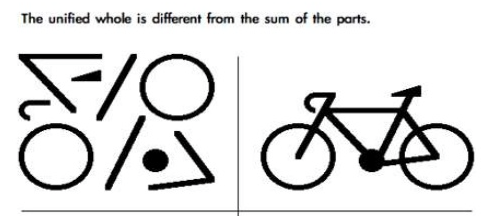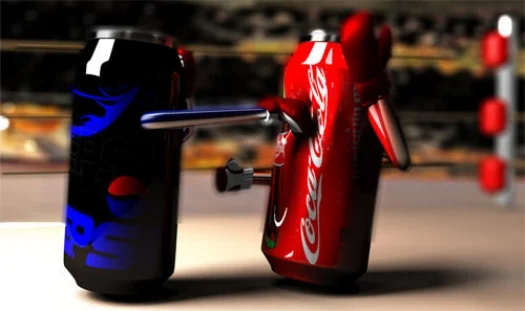What’s Your Fantasy?
Think about the word ‘fantasy.’ What comes to mind? For me its unicorns leaping across rainbows over Hogwarts School of Witchcraft and Wizardry.
But what about a brand fantasy…
In his book Brand Seduction, Daryl Weber explores the powerful, but usually hidden, unconscious side of brands. He defines a “Brand Fantasy” as the unconscious feeling we have toward a brand.
It’s a messy network of associations that get woven together to form an unconscious representation of the brand. It’s a primordial soup made up of fleeting images, abstract thoughts, and nuanced emotions that, for the most part, live below our conscious awareness
Sounds pretty clinical compared to our earlier fairy-tale imagery, so why call it a ‘fantasy’
Because, ideally, a brand should represent something that people want to aspire to. It could be a
feeling they want to have, something they want to be associated with and connected to, or provide a taste of the life they desire.
The Whole is More Than the Sum of its Parts
When you see something, you aren’t seeing all the small components that make it up; you’re seeing the item as a whole. You wouldn’t say, “look at those wheels, tires, doors, windows, windshield etc.,” you’d say “look at that car.”
This is known as Gestalt psychology. The main idea is that our mind perceives things as a whole, not as its individual parts, which exist as completely different entities.
Upon seeing an object, your brain automatically processes the incoming visual stimuli, sends it to the amygdala where it’s coded with emotion, and then to the hippocampus where it’s stored into long-term memory.
What all this brain-talk really means is, we don’t just see the physical object in front of us. We see what it means to us.
The same principals apply when we see products or brands.
Take for example something as simple as soup, literally. You’re in the grocery store walking down the aisle and pick up the Campbell’s can. In an instant your brain processes the incoming stimuli and automatically combines it with all your past experiences with the brand.
You’re not just seeing a red and white label on a tin can, you’re seeing Campbell’s soup and everything that it means to you: the memory of your mom making chicken noodle when you’re sick…the soft blanket you were wrapped in eating grilled cheese and tomato soup on a rainy day.
And with that involuntary, subconscious flash, you put the Campbell’s soup in your cart instead of a cheaper competitor. Why? Because the brand made you feel good.
When you have a positive association with a brand, you’re more likely to choose it over competitors. This is because our brains are naturally lazy. They constantly work to find shortcuts for decision making.
We don’t want to think about choices too much, and we’ve been programmed by evolution to go with our gut feelings. Feelings serve as our most trusted shortcut.
This is where the ~*magical*~ power of Brand Fantasy comes in. It has ability to create and guide consumers’ gut feelings and thus motivate their buying behavior.
Strong Fantasies = Strong Brands
A famous example of this Brand Fantasy effect is the classic Coke vs. Pepsi experiment. Participants who did a blind taste test overwhelmingly preferred Pepsi.
But participants who could see the brands preferred Coke. Why? Because the Coca-Cola brand was so powerful, it actually made the soda taste better.
Taste (like most sensations) is a subjective experience; each person’s individual perception becomes his or her reality. So participants who knowingly drank Coke weren’t just experiencing its taste, they were experiencing the way Coke made them feel— aka the Coca-Cola Brand Fantasy!
Research suggests that you can actually enjoy a purchase or experience more if it holds emotional value to you. (For more information on how advertising adds value by changing our perception, see Rory Sutherland’s TED Talk).
So, as a marketer, how can you give your brand emotional value? By slipping into the subconscious…
Are You Ignoring Me? Good.
Marketers often make the mistake of trying to directly relay or elicit a specific emotion via brand messaging. They don’t consider the fact that most messaging, like in an ad campaign, only gets viewers’ partial (or subconscious) attention. This means that the overt message they are sending customers is rarely received and encoded into memory.
However, because our brains are constantly taking in all the information around us (11 million bits per second!), the general tone and gist of the ad is stored into memory via low-involvement processing. And the information retained through low-involvement processing creates long-lasting implicit memories. Memories you don’t even know you have!
Meaning that every time we encounter a brand (even if we pay it no attention), our brains automatically process and store it.
Each minute exposure slips into our subconscious and adds to our set of associations, building our perceptions and beliefs about the brand. Marketing can thus be seen as the art of creating, managing, and developing these networks of associations in consumers’ minds.
Don’t Get Emotional
Let’s go back to Coca-Cola. Their current ad campaign “open happiness” aligns the brand with an emotion: happiness. And while happiness is a component of the Coca-Cola brand, it doesn’t even scratch the surface of their Brand Fantasy. As Weber (former director of creative strategy at Coca-Cola) puts it:
“The brand also has strong ties to nostalgia… it’s all-American, a taste of America for other countries, and a classic that harkens back to the good ol’ days…it’s optimistic and uplifting. It’s a simple pleasure, in good times and bad. It’s for everyone, rich or poor. It’s a rock of our culture– enduring and steadfast no matter what goes on around it.”
Coca-Cola didn’t become a global icon by owning a single emotion. They became an icon by creating a rich network of subconscious associations that gives customers an instinctively good feeling about the brand.
It’s not about standing for an emotion or making your consumers feel an emotion. Instead, you are trying to build the right associations with your brand that guide consumers’ unconscious feelings so that they feel positively toward it and are more likely to choose it over competitors.
Creating a gut feeling toward your product is what makes your brand the preferred option.
Build Your Brand Fantasy
Since a Brand Fantasy encompasses all the emotions, memories, associations, images, experiences, and feelings we have about a brand, it goes far beyond the limitations of rational or even conscious thought.
You need to get in touch with the unconscious, intangible side of your brand. Clear your mind and explore your senses. How does your brand look, sound, feel, smell, taste? (Not literally, please don’t lick your product). For example, if your brand is The North Face, it might smell like pine trees.
Once you have a feel for your brand, create your fantasy network. Start with a few core words and build a mind map of associations with your brand- like a brainstorm cloud. Create a mood board of various photos that bring your brand to life in a way words cannot. Use these tools to write a key phrase that triggers the full feeling of your Brand Fantasy.
You want your brand to be a part of your consumers’ lives, and your fantasy should represent a personality or attitude they aspire toward. Your fantasy should be unique to you and set you apart from your competitors. It should also be dynamic, so that it makes sense with current trends and can evolve with future ones.
Conclusion
Our brains are constantly taking in all of the information around us- even the things we aren’t paying attention to. So even though you ignored that commercial on TV, the general tone of it seeped into your subconscious where it was automatically coded with meaning and emotion.
And each time you’re exposed to a brand, the experience is added to a collection of associations you have about the brand. It could be anything ranging from what song was playing when you saw it, to who was wearing it, to what perfume that person was wearing.
All these unconscious associations form the gut feeling we have towards a brand. And these feelings become our intuition. They are our subconscious mind guiding us to make the right decision.
By creating the right associations with your brand, you can effectively make your brand the right decision in consumers’ subconscious minds.





